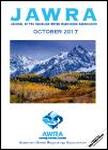版权所有:内蒙古大学图书馆 技术提供:维普资讯• 智图
内蒙古自治区呼和浩特市赛罕区大学西街235号 邮编: 010021

作者机构:Univ Michigan Water Ctr Ann Arbor MI 48104 USA Purdue Univ Agr & Biol Engn W Lafayette IN 47907 USA Purdue Univ Earth Atmospher & Planetary Sci W Lafayette IN 47907 USA Purdue Univ Forestry & Nat Resources W Lafayette IN 47907 USA Purdue Univ Agron W Lafayette IN 47907 USA
出 版 物:《JOURNAL OF THE AMERICAN WATER RESOURCES ASSOCIATION》 (美国水资源协会志)
年 卷 期:2015年第51卷第4期
页 面:973-991页
核心收录:
学科分类:0830[工学-环境科学与工程(可授工学、理学、农学学位)] 08[工学] 0708[理学-地球物理学] 081501[工学-水文学及水资源] 0815[工学-水利工程]
基 金:USDA NRCS University of Michigan Graham Sustainability Institute Great Lakes Restoration Initiative through NOAA-GLERL SOAR
主 题:watershed management optimization best management practices (BMPs) nutrients public participation conservation practice adoption interviews
摘 要:Targeting of agricultural conservation practices to cost-effective locations has long been of interest to watershed managers, yet its implementation cannot succeed without meaningful engagement of agricultural producers who are decision makers on the lands they farm. In this study, we engaged 14 west-central Indiana producers and landowners in an adaptive targeting experiment. Interviews carried out prior to targeting provided rich spatial information on existing conservation practices as well as producers preferences for future conservation projects. We targeted six of the most accepted conservation practices using the Soil and Water Assessment Tool and spatial optimization using a genetic algorithm approach. Fairly optimal conservation scenarios were possible with even the most limiting constraints of farmer-accepted practices. We presented in follow-up interviews a total of 176 conservation practice recommendations on 103 farm fields to 10 farmers whose lands were targeted for conservation. Primary findings indicated producers were interested in the project, were open to hearing recommendations about their lands, and expressed a high likelihood of adopting 35% of targeted recommendations. Farmers generally viewed the interview process and presentation of results quite favorably, and the interviews were found to build trust and make the targeting process more acceptable to them.